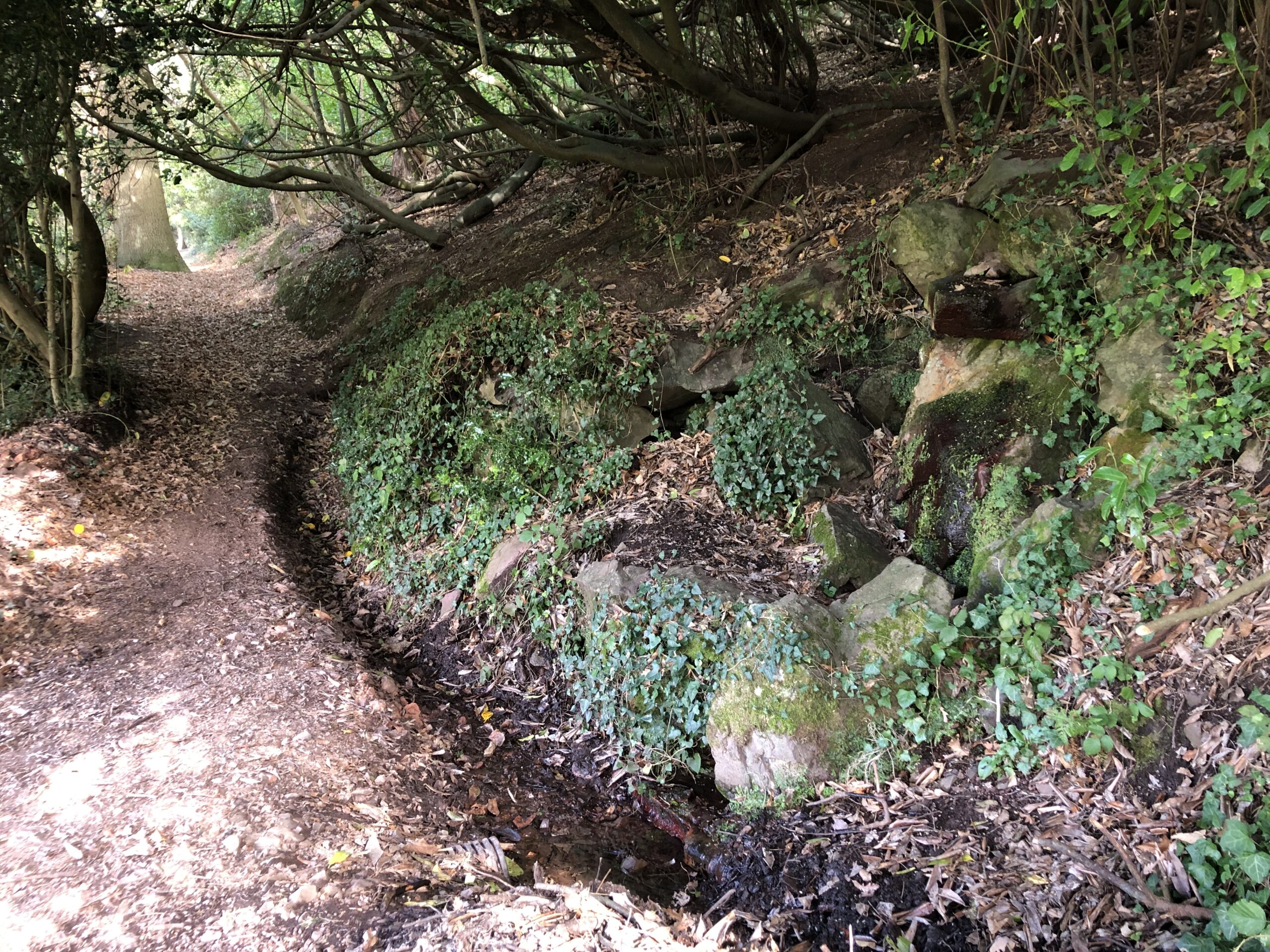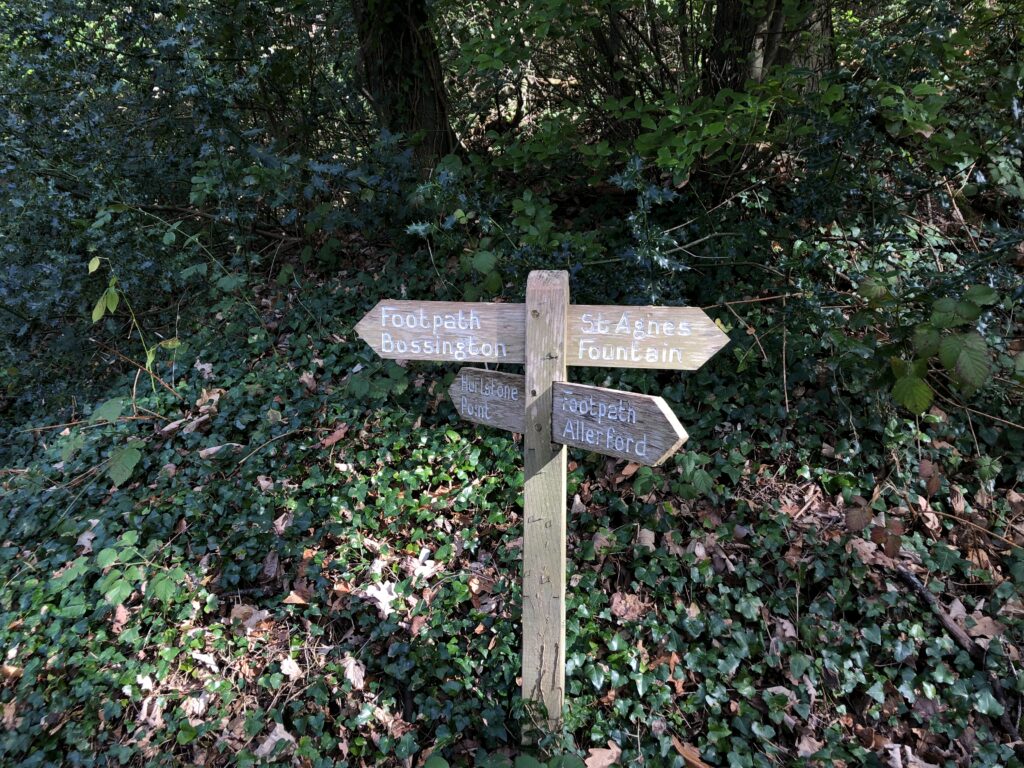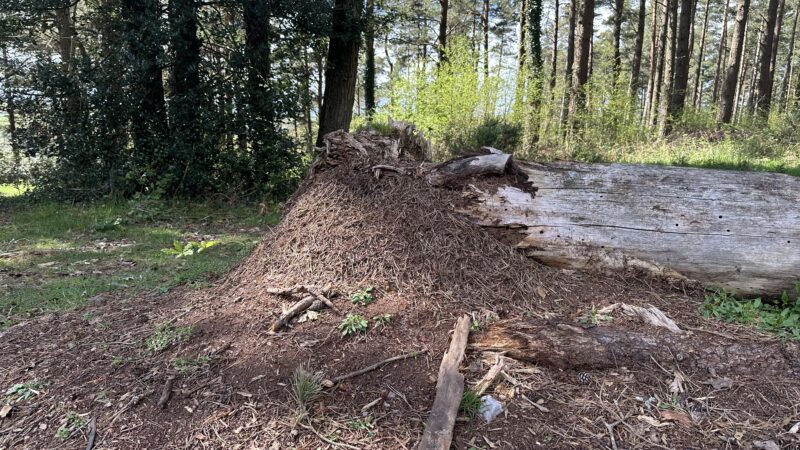The holy fountain that’s not a fountain, nor holy

At Agnes’ Fountain in the woods above Allerford, wetness oozes parsimoniously down a jumble of rocks, collecting into single drops that swell and fall with a quiet tick on to a shawl of saturated moss. The movement is so gentle that liverwort can spread its flat fingers on the stoneface without bruising. Nearly 450 species of liverworts, hornworts and mosses have been recorded on Exmoor, where high rainfall, abundant woodland and a cool climate provide ideal conditions.
This species is snakeskin liverwort (Conocephalum conicum). Its lobes are patterned with conspicuous pores and lines that look like slick reptilian scales. It’s also known as great scented liverwort and reputed to be strongly aromatic. Expecting a sweet fragrance, I lean close and am surprised by a pungent smell of fresh mushrooms.

The “fountain” has no collecting basin, although a bit of water puddles below the monument before seeping into a plastic pipe. Dampness grudgingly reappears further down as a dark zigzag on the dry earth path, before sliding away under a canopy of brambles. When it emerges again, it has become a “splat”– a definite, gurgling trickle running into the silky burble of the River Aller.

Signs set up by the National Trust claim this is “St Agnes’ Fountain” and there are hints of sacredness. But there is no saint, and the well was in fact made in 1820 by Sir Thomas Dyke Acland, a local MP and baronet, and an admirer of the picturesque, who named it after his youngest daughter. It is one of a pair that Acland created – the even more modest Katherine’s Well is about a quarter of a mile to the east. It is possible that both springs had an older tradition of veneration that his aesthetic remodelling erased.
Acland espoused a muscular faith of Victorian certainty. His long life is commemorated at the top of the hill with a stone memorial hut offering sturdy shelter against wind and weather. An inscription on the back of the building reads:
“IN REMEMBRANCE OF THE FATHER who, during more than fifty years, took Sunday walks up this combe with his CHILDREN and GRANDCHILDREN training them in the love of NATURE and of CHRISTIAN POETRY.”
First published 2 March 2023 in The Guardian’s Country Diary





